Joseph Maria Olbrich was a leading architect of the Austrian Art Nouveau and a founder of the Vienna Secession.
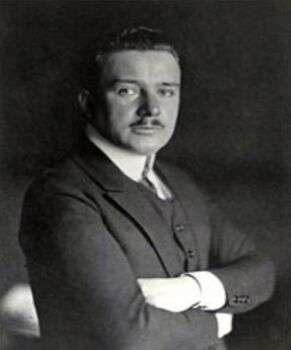
Image source: https://en.wikipedia.org/wiki/Joseph_Maria_Olbrich#/media/File:Joseph_Maria_Olbrich_1908.jpg
About His Life
Born in Opava, in Austrian Silesia (now part of the Czech Republic), Joseph Maria Olbrich studied architecture at the Wiener Staatsgewerbeschule and at the Academy of Fine Arts in Vienna under Otto Wagner.
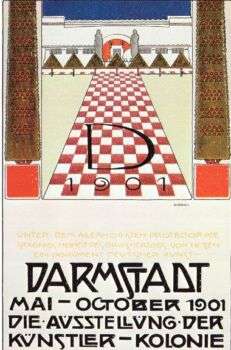
Image source: https://search.creativecommons.org/photos/09d4fb31-10ea-48ca-91bd-459cd364669f by MCAD Library
Along with Koloman Moser, Josef Hoffmann, Otto Wagner, and Gustav Klimt, Olbrich founded “Viennese Secession” (1897), a group of dissenting artists who split off in protest against the academy art scene as other late 19th-century secessionist artists had already done in Berlin (1892) and Munich (1893).
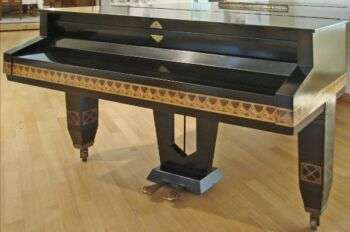
Image source: https://search.creativecommons.org/photos/c8b77d5a-58cf-4de5-8ef1-41813a4e7914 by dalbera
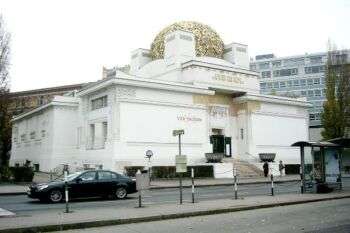
Image source: https://search.creativecommons.org/photos/67f29ccf-9fb5-46c3-946d-b4e91841caee by roryrory
Olbrich’s Style
Influenced by the Viennese architect Otto Wagner, Olbrich worked with the Art Nouveau style, known in Austria as Sezessionstil or by its German name of Jugendstil, and promoted decorative design. Yet, he managed to overcome the weaknesses and limitations of Art Nouveau architecture. He combined its fantastic appearance with spatial and distribution functionality.
Thus, like Victor Horta (1861-1947) in Belgium, Hector Guimard (1867-1942) in France, and Antoni Gaudì (1852-1926) in Spain, Olbrich acted as a bridge between 19th-century architecture and the advent of full-blooded modernism.

Image source: https://search.creativecommons.org/photos/00f090d0-308b-4e17-9359-74a2f7dd454e by dalbera
His Major Works
- “House of the Secession”: Located in Vienna (1898-1999), Olbrich designed the structure for the Secession exhibitions, which was his first large-scale project. It is notable for its blocky simplicity, but the metal dome has Art Nouveau floral ornaments.
- The Hochzeitsturm (1907; Tower of the Wedding): Located in Darmstadt, which had rounded toe-shaped roof overhangs reminiscent of Art Nouveau, but also had sashes that marked a distinctly modern trend.
- House at Cologne-Marienburg (1908–09): A department store in Düsseldorf (designed in 1906 and completed after his death).
Darmstadt Artists’ Colony
A colony of artists originated in Darmstadt around 1900 with the support of the Grand Duke of Hesse Ernst Ludwig von Hesse. They tried to implement this Crafts Guild idea, pursued by Victorians such as Ruskin and Morris, creating a village studio that included studio apartments, a workshop school, and his residence. The colony wanted to contribute to the economic growth of the region through the presence of the most important German-speaking artists, whose work is presented to the public in a series of exhibitions. Olbrich designed six houses here, as well as a central meeting and study hall, which bears witness to the influence of Scottish architect Charles Rennie Mackintosh.
- Ernesto Luigi’s house: Built in the form of a common atelier, was designed by Joseph Maria Olbrich. He worked as an architect and was the central figure of the artistic cenacle, while Peter Behrens was a painter and illustrator.
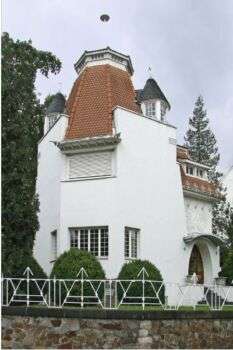
Image source: https://search.creativecommons.org/photos/a79a890f-6a8f-4075-8429-f38fbf3909c3 by dalbera
- Wilhelm Deiters House
- The large Glückert house
- The small Glückert house (Rudolf Bosselt’s house)
- House of Joseph Maria Olbrich
- Ludwig Habich’s House
- Hans Christiansen House

Image source: https://search.creativecommons.org/photos/50628838-bca6-4015-a154-2f6b4e979d3c , Metro Centric
Info sources:
